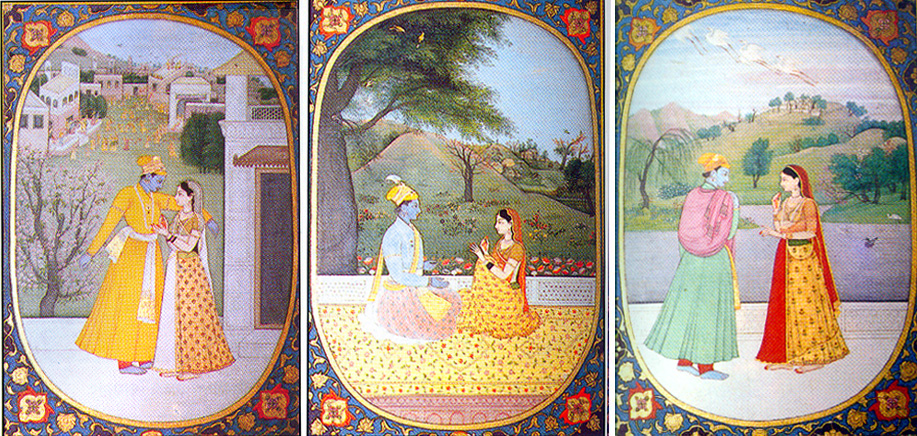Kangra Miniature Paintings
- Home
- Kangra Miniature Paintings

Kangra Miniature Paintings
The invasion of Delhi in A.D. 1739 by Nadir Shah caused unrest in the Imperial court of Delhi. This resulted in the migration of some artists from Delhi to courts of hill rulers.
Two states which patronized the artists were Bhasoli and Kangra - in these States flourished the pahari style of painting.
This style of painting is famous for its flowing and refined lines and also for the depictions of the rolling hills. This delicate Mughal style was for the first time used on Hindu matter - i.e. stories of Mahabharata, Ramayan, Radha Krishna, Rajput chivalry, battle scene, court scene, festivals, portraits of the rulers and various other scenes of Erotica, nayaka etc.
Under Maharaja Sansar Chandra of Kangra, the greatest patron of paintings in the Punjab hills, more than 40,000 Kangra miniature paintings were commissioned. These paintings were highly valued even at the time of their commissioning - Maharaja Anirudh Chandra, when escaping to Haridwar, carried with him the best paintings (by master artists like Bihari, Jaya Deva and Keshav Dass - their descendants are still practicing the old art of Kangra paintings), from his father's collections.
